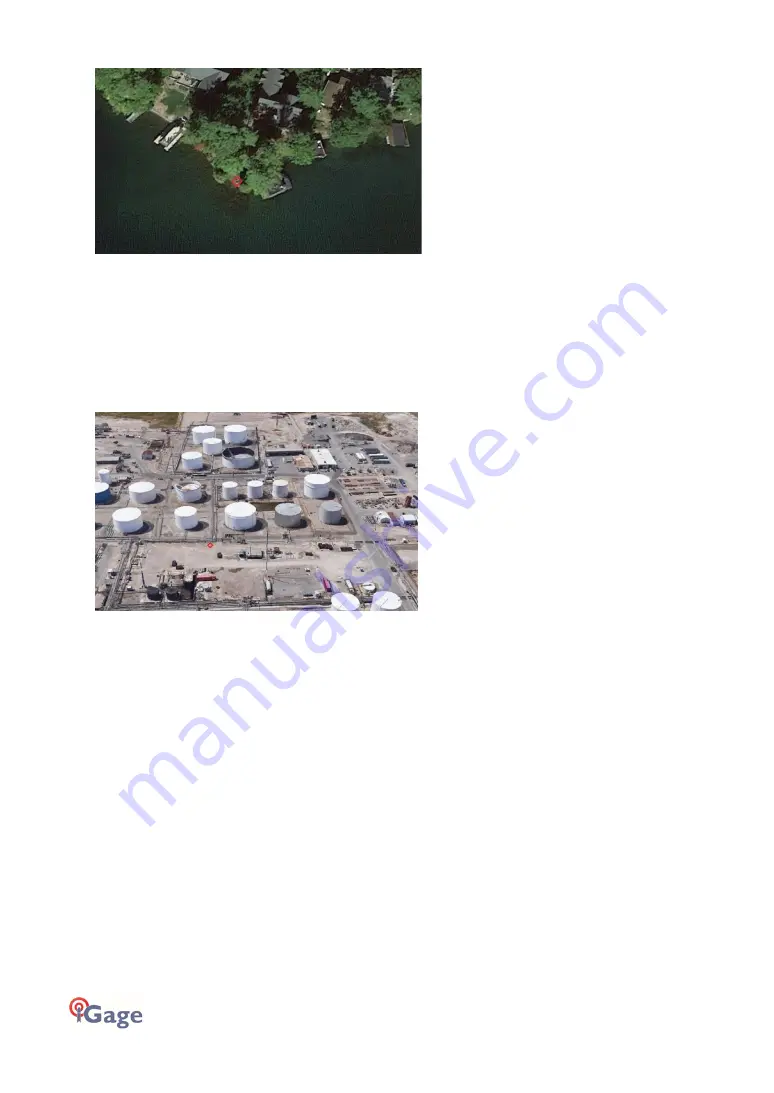
68
iGage iG9 User Manual
Large Reflective Surfaces Nearby
Your receiver trusts that the signals that it receives have traveled directly from the satellite to your
antenna. Large nearby surfaces present opportunities for the receiver to have signals arrive having
taken multiple paths (multipath) or entirely the wrong path.
Not only do these tanks block the view to the South, but they also have metal-reflective surfaces
that provide a multiple length signal path for every signal from every satellite to the observation
area:
(this image is looking South)
Flat metal surfaces are bad. Corrugated metal surfaces (like corrugated roofing) are even worse.
Some mirrored glass windowing used on building exteriors is reflective at microwave frequencies.
Box truck bodies, metal buildings, metal roofs and open water are all potential sources of multipath.
Deep Canyons
Locations at the bottom of deep canyons, especially East-West trending canyons will present full,
100% obstruction below the ridge line to the South. Most of the GPS satellites are to the South. This
is
BAD
.
RBUT (below) is an NGS CORS site and is the closest CORS site to the iGage office in Salt Lake City
Utah. This site is hindered by a solid mountain 30° mask to the South. This could be a challenging
location for GPS observations and is not a great location for a CORS site.
Moving further North would gain elevation, effectively lowering the southern mask.






























